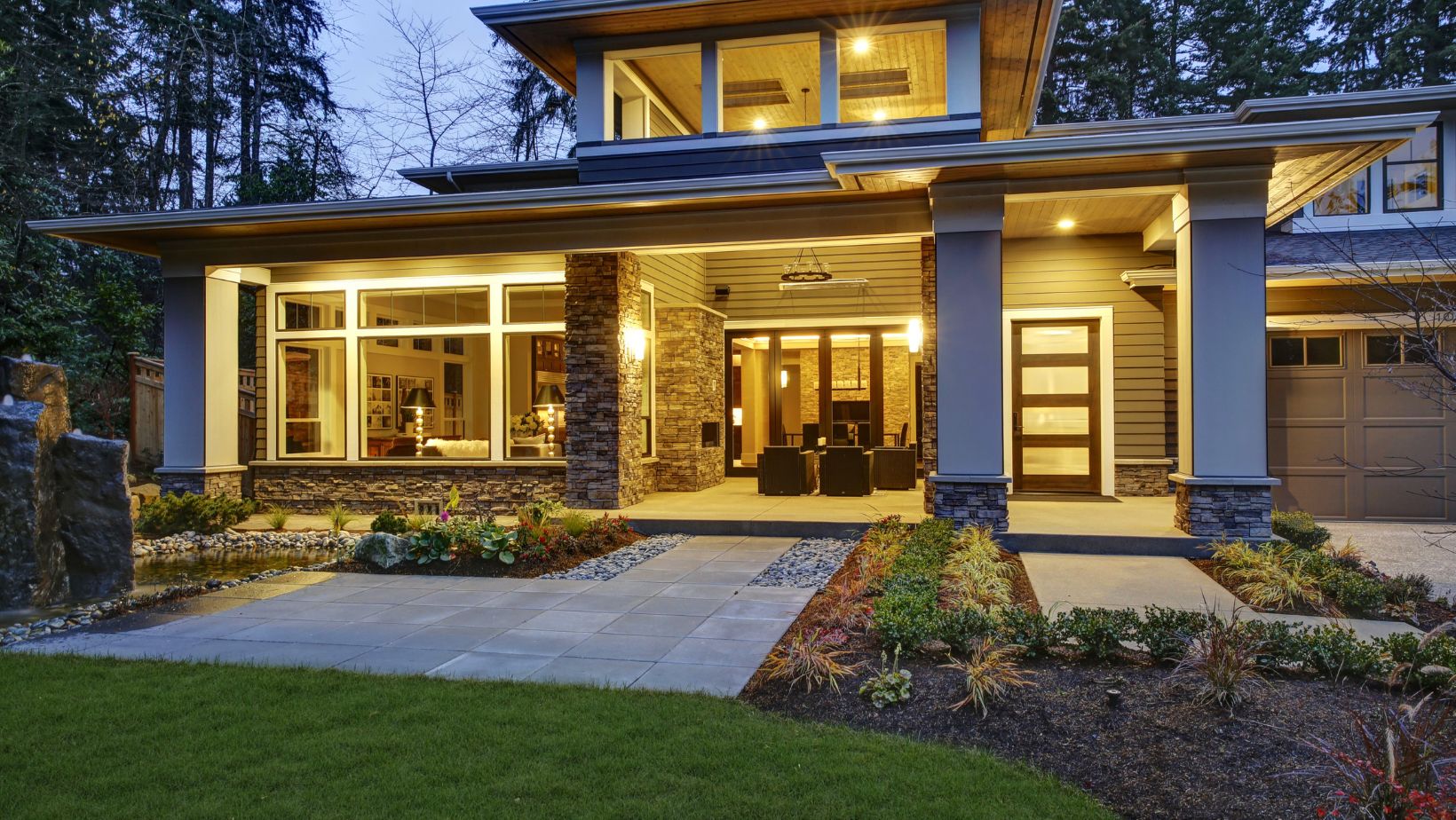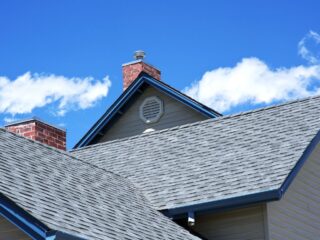
When it comes to choosing paving materials, it can be tough to find the right balance between cost and style. You want your home to look great, but you don’t want to spend more than you can afford. We understand that it’s not easy to make these decisions, especially when there are so many options out there.
To make sure you get the best advice, we consulted with a landscape supplier, Natural Stone and Timber. They shared their expertise to help us write this article so that you can make informed choices without breaking the bank.
You’ll learn how to match paving materials with your home’s exterior in a way that looks great and fits your budget.
Know Your Home’s Architectural Style
Before choosing paving materials, it’s important to understand the architectural style of your home, as it plays a big role in determining which paving materials will look best. Here’s a simple guide to help you identify the most common styles and how they can influence your choice.
Georgian Style
Georgian homes are known for their symmetry and balance. They often have brick or stone exteriors with simple, clean lines. If your home is made in this style, you might want to choose paving materials that also have a clean, elegant look. For example, sandstone or limestone with smooth edges can match the classic feel of a Georgian home.
Victorian Style
Victorian homes are often more ornate, with decorative details and vibrant colors. These homes might have red brick exteriors and intricate trim work. For a Victorian home, consider using paving materials that add to the house’s character. Mosaic tiles or colorful stones can improve the historic charm of a Victorian home.
Modern Style
Modern homes usually have a minimalist design with sharp lines and open spaces. They often use materials like glass, metal, and concrete. If your home is modern, you’ll want paving materials that match its sleek, simple look.

Porcelain or large concrete pavers can create a smooth, clean surface that fits well with modern architecture.
Cottage Style
Cottage homes have a cozy, welcoming feel, often with white walls and natural materials like wood or stone. These homes look best with paving materials that blend naturally with the surroundings. Gravel or rustic stone pavers can improve a cottage home’s charming, relaxed vibe.
Your home’s architectural style should guide your choice of paving materials. The right materials will complement the design of your home, making everything look more connected. For example, a Georgian home looks better with formal, clean-cut stones, while a cottage-style home benefits from more natural, textured materials. By matching your paving materials to your home’s style, you’ll create a more harmonious and appealing exterior.
Choosing the Right Paving Material
Selecting the right paving material is key to creating an exterior that not only looks great but also lasts a long time. Different materials offer different benefits, so it’s important to choose one that fits both the style of your home and your practical needs. Let’s start with reviewing the most popular paving materials – natural stone.
Natural Stone (Sandstone, Limestone, Slate)
Natural stone has become a popular choice for paving because of its timeless beauty and durability. Each type of stone offers something unique, so let’s look at the pros and cons of the most common options: sandstone, limestone, and slate.
Sandstone
- Pros: Sandstone is durable and comes in a range of warm, earthy colors like tan, yellow, and brown. It’s also available in different finishes, from smooth to textured, allowing for flexibility in design.
- Cons: Sandstone can be porous, meaning it may absorb water and stain more easily than other stones. It may require sealing to maintain its appearance.
- Best for: Traditional homes and cottages. The warm tones of sandstone can complement brick exteriors and blend naturally with garden landscapes.
- Colour Palettes and Finishes: Sandstone pairs well with red or brown brick homes and looks great with natural or rustic finishes. A smooth finish can create a more refined look, while a textured finish adds character.
Limestone
- Pros: Limestone is known for its consistent colour and smooth surface. It often comes in shades of grey, beige, and cream, which gives it a clean and sophisticated look. Limestone is also very dense, making it durable and less prone to weathering.
- Cons: Limestone can be more expensive than other stones, and its light colour can show dirt more easily.
- Best for: Period properties and homes with a formal garden layout. Limestone’s refined appearance works well with Georgian and Victorian homes.
- Colour Palettes and Finishes: Light grey or cream limestone can create a striking contrast against darker exteriors. A honed finish offers a smooth, matte look that improves the stone’s natural elegance.
Slate
- Pros: Slate is highly durable and non-porous, making it resistant to stains and weather damage. It comes in darker shades like grey, black, and blue, which add a sophisticated and modern touch to any exterior.

- Cons: Slate can be more difficult to work with due to its weight and hardness. It can also be more expensive than other stones.
- Best for: Modern homes or properties that need a strong, bold look. Slate’s dark tones work well with both contemporary and traditional designs, adding a touch of elegance.
- Colour Palettes and Finishes: Dark grey or black slate pairs nicely with lighter exteriors, such as white or cream-colored homes. A natural cleft finish, which shows the stone’s layered texture, can add depth and interest to your paving.
Natural stone is a versatile and durable option that can suit many home styles, from traditional to modern. When choosing natural stone, consider the overall colour palette and finish to ensure it complements your home’s exterior. Whether you opt for the warmth of sandstone, the elegance of limestone, or the boldness of slate, natural stone can improve the look and value of your home.
Porcelain
Porcelain paving is a modern paving material that offers a sleek, uniform appearance. It’s particularly well-suited for contemporary homes that emphasise clean lines and simplicity. Here’s what you need to know about porcelain pavers.
Pros:
- Sleek, Modern Appearance: Porcelain pavers have a smooth, consistent surface that gives your outdoor space a clean, polished look. They come in a variety of colours and finishes, allowing you to create a modern aesthetic that matches your home’s design.
- Colour Uniformity: Unlike natural stone, which can have variations in color and texture, porcelain is manufactured to be uniform. This ensures a consistent look across your paving, which is ideal for modern homes where a cohesive appearance is important.
- Low Maintenance: Porcelain is non-porous, meaning it doesn’t absorb water. This makes it resistant to stains, mildew, and frost, and it’s easy to clean with just water and mild soap. You won’t need to worry about sealing porcelain like you would with natural stone.
Cons:
- Brittleness: Although porcelain is durable, it can be more brittle than natural stone, which means it requires careful installation to avoid cracking.
Best for:
- Contemporary Homes: The sleek and uniform look of porcelain is perfect for homes with modern, minimalist designs. It complements clean architectural lines and open spaces, making your outdoor areas look well-organized and stylish.
Colour Palettes and Finishes:
- Porcelain pavers are available in a wide range of colours, from light neutrals like beige and grey to darker, more dramatic tones like charcoal and black. You can also choose from different finishes, such as matte or polished, depending on the preferred look. For a modern home, light grey or white porcelain with a smooth, matte finish can create a crisp, clean appearance.
Porcelain is an excellent choice if you’re looking for a modern, low-maintenance paving material. Its uniform colour and sleek appearance make it ideal for contemporary homes, while its durability ensures it will stand up to the elements for years to come.
Matching Paving Colours with Exterior Elements
Choosing the right paving colours is just as important as selecting the right materials. The colours you choose should complement your home’s exterior, including the paint, trim, and surrounding landscaping. This section will help you understand how to harmonise these elements for a cohesive and attractive look.
Techniques for Color Matching or Contrasting:
- Colour Matching: One approach is to match the paving colour closely with your home’s exterior paint or trim. This creates a seamless, unified look that makes your home and outdoor spaces feel connected. For example, if your home is painted in warm, earthy tones, you might choose sandstone pavers in a similar shade to maintain a consistent colour scheme.
- Colour Contrasting: Another technique is to choose a contrasting colour that highlights certain features of your home. For instance, if your house is a light colour like white or cream, you could use darker pavers, such as slate or dark grey porcelain, to create a striking contrast. This not only draws attention to your paving but also adds depth and interest to your overall exterior design.
Visual Impact of Different Colour Combinations:
- Monochromatic Schemes: Using different shades of the same colour can create a subtle, sophisticated look. For example, pairing a light grey house with slightly darker grey pavers gives a layered effect without being too bold.
- Complementary Colors: Using colours that are opposite each other on the colour wheel, like blue and orange, can create a vibrant and dynamic appearance. However, it’s important to use this technique carefully to avoid overwhelming the space.
- Analogous Colors: These are colours next to each other on the colour wheel, such as green and yellow. Choosing analogous colours for your home and paving can create a harmonious and pleasing visual flow.
Matching paving colours with your home’s exterior elements is crucial for creating a cohesive and attractive outdoor space. Whether you choose to match or contrast colours, the goal is to create a look that enhances both your home and garden. By carefully selecting paving colours that complement your exterior paint, trim, and landscaping, you can achieve a harmonious design that ties everything together.





